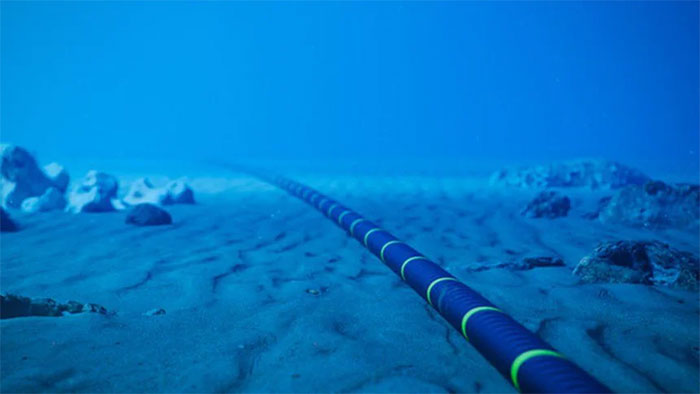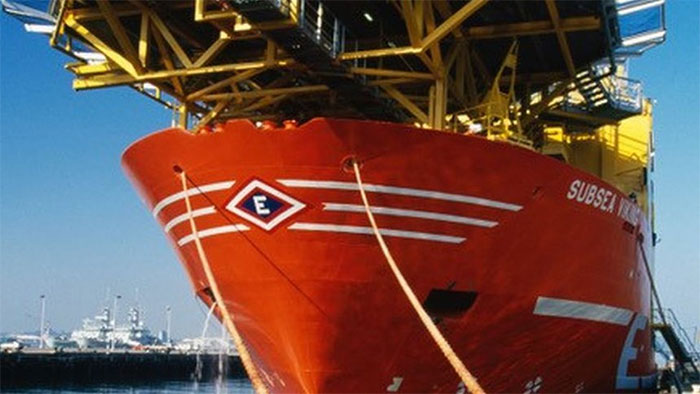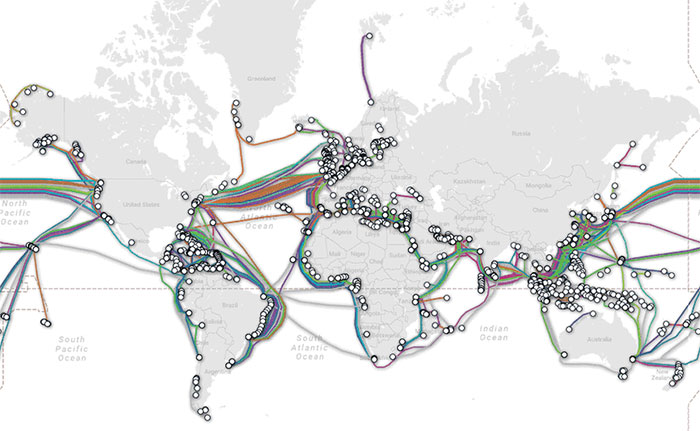After the dual disaster of a volcanic eruption and tsunami, Tonga is completely reliant on the repair process of the undersea cable in the South Pacific to reconnect with the outside world, according to the BBC.
The undersea fiber optic cable linking Tonga to the rest of the world was severed during the volcanic eruption on January 15. The New Zealand Ministry of Foreign Affairs stated that the repair of the 49,889 km cable in the South Pacific could take more than a month.
The underwater volcanic eruption, which triggered a devastating tsunami in mid-January, left 110,000 people in Tonga without power, according to the BBC.
A temporary 2G wireless connection using a satellite from the University of the South Pacific has been established on Tonga’s main island. However, this service is only temporary as the internet quality remains unstable.

Approximately 37 km of undersea cable in Tonga was severed due to the volcanic eruption that triggered a violent tsunami in mid-January. (Photo: AFP).
Repair Process
The undersea cable system, operated by Tonga Cable, is believed to be severed about 37 km offshore. According to Reuters, Tonga Cable has confirmed the cable break through a fault detection process following the dual volcanic-tsunami disaster in mid-January.
Peter Jamieson, chief engineer at Virgin Media and vice president of the European Submarine Cable Association, believes that the process of repairing the cable in Tonga is relatively straightforward.
“They (the technical team) will send a light pulse from the island (of Tonga), and a device will measure the travel time of the light pulse, thereby determining the location of the break,” Jamieson explained. Subsequently, a repair ship will be dispatched to the first break point of the cable.
Technicians have two options to reconnect the severed cable ends. They can use a remotely operated underwater vehicle (ROV) or a grapnel, which is a device that includes a chain with a hook at one end.
According to Jamieson, if the entire process goes smoothly, the repair of the severed cable in Tonga will take 5-7 days.
However, in reality, sending a repair ship to Tonga will take much longer. The nearest repair ship is currently docked at the port of Moresby in Papua New Guinea, approximately 4,700 km away from Tonga.
Additionally, experts must confirm that the destination is safe for the ship and crew. They need to determine whether there are any volcanoes in the vicinity of the cable repair area that could potentially erupt.

The process of repairing the undersea cable in Tonga may take time due to difficulties in coordinating the repair ship’s arrival. (Photo: Getty).
The Only Cable
According to BBC estimates, there are about 200 cable fault incidents worldwide each year that require repairs. However, 90% of these incidents are caused by fishing activities, and cases of undersea cable damage due to natural disasters are very rare.
The data transmission cable consists of glass optical fibers. Most of the cable’s thickness is the outer sheath designed to protect the internal optical fibers.
In Western countries, a severed undersea cable is not a serious issue because there are many other cables available. However, Tonga has only one cable. Therefore, when this cable is severed, Tonga becomes isolated from the outside world.

Unlike Western countries, Tonga’s connection to the world relies entirely on a single undersea cable. (Photo: Telegeography)
“Ideally, (each country) should have at least two undersea cables,” Jamieson said. “However, the cost of cables and the installation process is very expensive, and there is no incentive for Facebook, Google, or any company to build a cable system there (in Tonga).”
In 2019, Tonga experienced a cable break due to a technical fault from the anchor of a ship. After this incident, Tonga signed a 15-year satellite connectivity agreement.
However, the use of satellite phones in Tonga has recently been affected by smoke and ash covering the entire country.
Satellite phones are a type of device used for communication in areas without mobile phone coverage. However, the cost of such devices is very high, so only government officials and some businesses can afford to use satellite phones.
The mobile network provider Digicel has established a temporary system on Tonga’s main island, Tongatapu. This system uses a satellite dish from the University of the South Pacific to provide 2G coverage, although the transmission quality remains limited.


















































